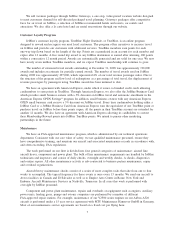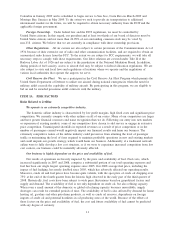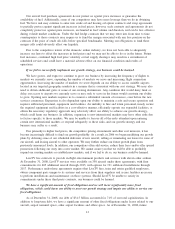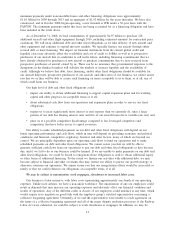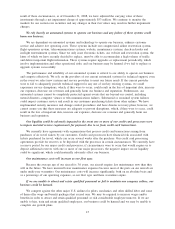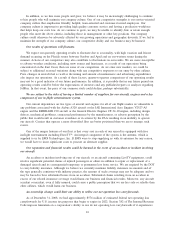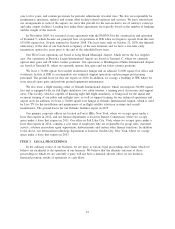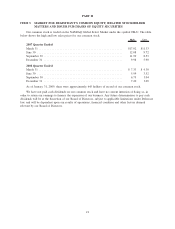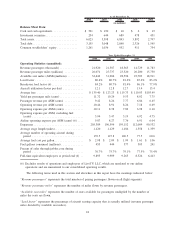JetBlue Airlines 2008 Annual Report Download - page 26
Download and view the complete annual report
Please find page 26 of the 2008 JetBlue Airlines annual report below. You can navigate through the pages in the report by either clicking on the pages listed below, or by using the keyword search tool below to find specific information within the annual report.an “ownership change”. In the event an “ownership change” were to occur in the future, our ability to utilize
our net operating losses could be limited.
Risks Associated with the Airline Industry
The airline industry is particularly sensitive to changes in economic condition.
Fundamental and permanent changes in the domestic airline industry began several years ago following
five consecutive years of losses being reported through 2005. These losses resulted in airlines renegotiating or
attempting to renegotiate labor contracts, reconfiguring flight schedules, furloughing or terminating employees,
as well as considering other efficiency and cost-cutting measures. Despite these actions, several airlines have
reorganized under Chapter 11 of the U.S. Bankruptcy Code to permit them to reduce labor rates, restructure
debt, terminate pension plans and generally reduce their cost structure. Since 2005, the U.S. airline industry
has experienced significant consolidation and liquidations. Current unfavorable general economic conditions,
such as higher unemployment rates, a constrained credit market, housing-related pressures, and increased
business operating costs can reduce spending for both leisure and business travel. Unfavorable economic
conditions could also impact an airline’s ability to raise fares to counteract increased fuel, labor, and other
costs. It is foreseeable that further airline reorganizations, consolidation, bankruptcies or liquidations may
occur in the current recessionary environment, the effects of which we are unable to predict. We cannot assure
you that the occurrence of these events, or potential changes resulting from these events, will not harm our
business or the industry.
A future act of terrorism, the threat of such acts or escalation of U.S. military involvement overseas
could adversely affect our industry.
Even if not directed at the airline industry, a future act of terrorism, the threat of such acts or escalation
of U.S. military involvement overseas could have an adverse effect on the airline industry. In the event of a
terrorist attack, the industry would likely experience significantly reduced demand. We cannot assure you that
these actions, or consequences resulting from these actions, will not harm our business or the industry.
Changes in government regulations imposing additional requirements and restrictions on our
operations or the U.S. Government ceasing to provide adequate war risk insurance could increase our
operating costs and result in service delays and disruptions.
Airlines are subject to extensive regulatory and legal requirements, both domestically and internationally,
that involve significant compliance costs. In the last several years, Congress has passed laws, and the DOT,
FAA and the TSA have issued regulations relating to the operation of airlines that have required significant
expenditures. We expect to continue to incur expenses in connection with complying with government
regulations. Additional laws, regulations, taxes and airport rates and charges have been proposed from time to
time that could significantly increase the cost of airline operations or reduce the demand for air travel. If
adopted, these measures could have the effect of raising ticket prices, reducing revenue and increasing costs.
We cannot assure you that these and other laws or regulations enacted in the future will not harm our business.
The U.S. Government currently provides insurance coverage for certain claims resulting from acts of
terrorism, war or similar events. Should this coverage no longer be offered, the coverage that would be
available to us through commercial aviation insurers may have substantially less desirable terms, result in
higher costs and not be adequate to protect our risk, any of which could harm our business.
ITEM 1B. UNRESOLVED STAFF COMMENTS
None.
17


